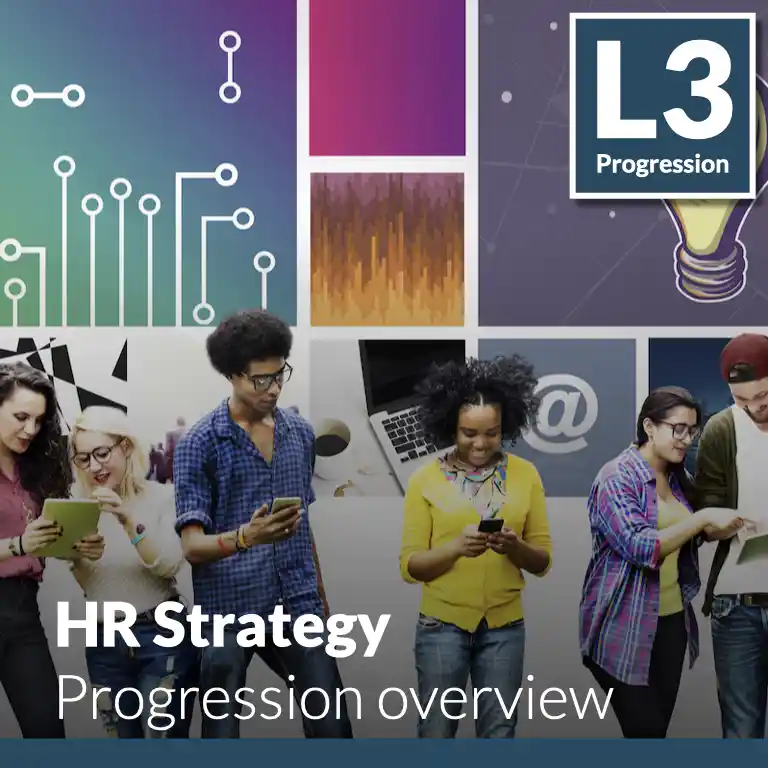Enjoy instant access to a scalable system of proven practices and execution-ready tools. Built to launch strategic HR programs 5X faster!
✓ Enjoy platform access
✓ Create your HR roadmap
✓ View open content in library
✓ Access dozens of practices:
⤷ The HR Strategy program
⤷ Explainers and deep dives
⤷ Supplemental guides
⤷ Insight articles
⤷ Weekly best practices
⤷ And more!
100% Free. No credit card required.
This guide is part of a progression set comprised of Core, Advanced, and Emerging HR Strategy practices.
At its most sophisticated level, HR Strategy defines a future centered around optimizing how employees and their needs are managed and how critical external resources and relationships can best be leveraged to effectively drive productivity, retention, and business results. It focuses on long-term trends and advances in relevant workforce, workplace, and work design constructs, preparing the organization to compete effectively with business-aligned and efficient resourcing and partnerships.
It focuses HR attention on making the employee experience not just satisfying but well-tuned to their needs and preferences as they conduct the company's business. It ensures that employee input and insights are leveraged when redesigning and improving critical HR processes. The strategy addresses how the company interacts with the external world, carefully selecting partners and collaborators with whom it can provide and receive the value that benefits all involved. It uses those relationships to simultaneously improve recruiting, skill development, and related opportunity areas for local community residents and the company.
The HR strategy further addresses using external resources - both technology and human-based - that can support continued growth and meet business requirements. In this way, an "ecosystem" of employee service and product providers is created that expands beyond the company's walls and offers cost-effective solutions to challenges faced on an ongoing basis. It also looks into the future to assess (and plan for) the potential impact of technology and people trends on how, where, and what work will look like. Considering the “Future of Work” concepts is core to developing an advanced and long-term success profile in the company's human resources management.
An emerging HR Strategy focuses on making the workplace and work life more attractive and responsive to employees and managers (current and prospective) to the extent that the company culture supports constructive and efficient business operations. It also makes the most out of HR tasks viewed as "just another business process" by designing them with a focus on a positive and intuitive flow of actions that ease the burden on employees as they act on administrative processes.
By leveraging a broader ecosystem of external and internal resources, more cost-effective and impactful relationships can bring heightened value to the company, with outsourcing, educational, community, and industry/governmental partnerships enhancing the company's ability to meet or exceed its objectives. Furthermore, the emerging strategy identifies opportunities to outsource less impactful and repetitive administrative processes and tasks to free up HR teams to deliver more strategic services to leaders and employees.
The emerging HR strategy approach yields critical outcomes that promise to reshape the organization's talent management and human resources approach. First, developing an employee experience (EX) strategy enhances every facet of the employee journey, from recruitment to retirement, emphasizing engagement, satisfaction, and personal growth. It is designed to create a workplace culture that attracts, retains, and inspires top talent by using employee input and identifying “pain points” that can be eliminated or replaced with more fluid processing of common tasks.
Additionally, the approach identifies and builds a broader, external-facing HR Ecosystem. This ecosystem extends beyond the organization's boundaries, fostering connections with external partners, institutions, and talent pools. By collaborating with external stakeholders, HR can tap into diverse expertise, leverage emerging trends, and expand its influence on a global scale, driving innovation and competitiveness.
Moreover, a comprehensive HR outsourcing strategy provides a roadmap for optimizing HR functions through strategic subcontracting. This approach enables the organization to focus on core competencies while partnering with specialized providers to deliver HR services efficiently and cost-effectively. It can enhance organizational flexibility, agility, and resource allocation within the HR function and throughout the organization.
Lastly, future-focused HR visioning is established as a capability within the function, setting the organization on a path toward HR transformation in the digital age. This forward-looking vision encompasses integrating emerging technologies, such as AI and advanced data analytics, to enable predictive talent management, strategic workforce planning, and agility in response to market shifts. It creates new work and employment models and location options.
Adopting emerging practices in HR Strategy creates a work environment that is focused on simplifying employees’ work lives and processes, builds an ecosystem that is supportive of a more robust and cost-effective talent utilization, and addresses the “how,” “where,” and “by whom” of imminent changes and trends in the workplace and workforce. It creates a mindset within the leadership ranks of the importance of workforce efficiencies and effectiveness as new technologies, location flexibilities, and workforce dynamics redefine the very nature of work and the employment relationship.
Approaching the full employee journey from pre-hire to post-exit interactions with an intentional focus to address employee preferences and target key experiences.
Recognizing and proactively engaging the external ecosystem and communities where HR is involved to create additional internal benefits and boast external recognition.
Evaluating HR functions that could be outsourced to partners based on the skills availability, repetitive tasks volume, or relative complexity of the work rather than the strategic value of the solutions provided to key business operations.
Preparing the organization for future shifts in how the work in the company will be conducted, who will perform the work, and where the work will be performed.

Enjoy instant access to a scalable system of proven practices and execution-ready tools. Built to launch strategic HR programs 5X faster!